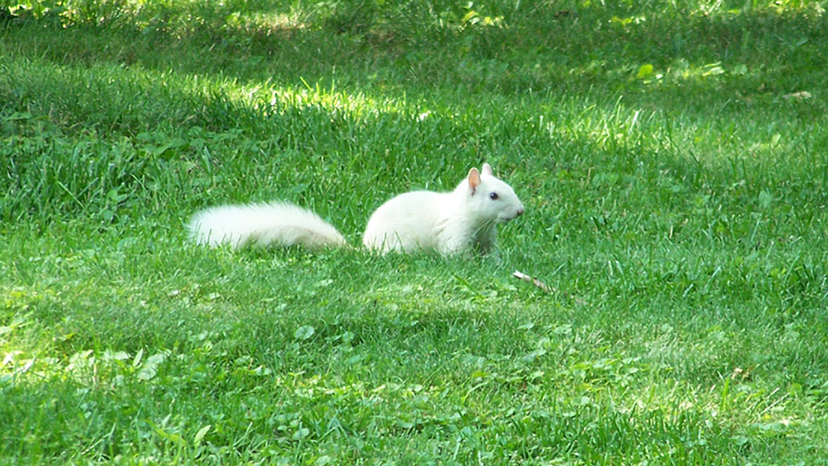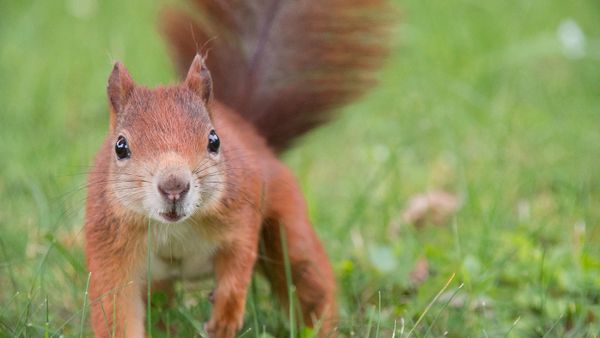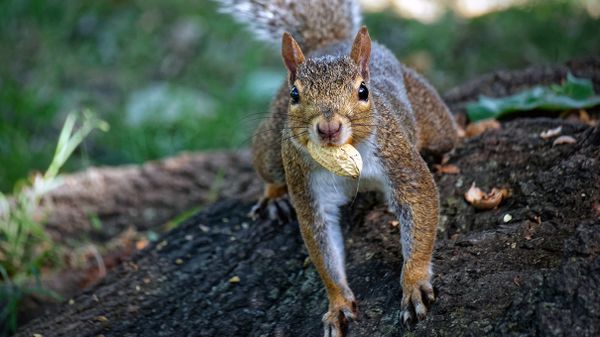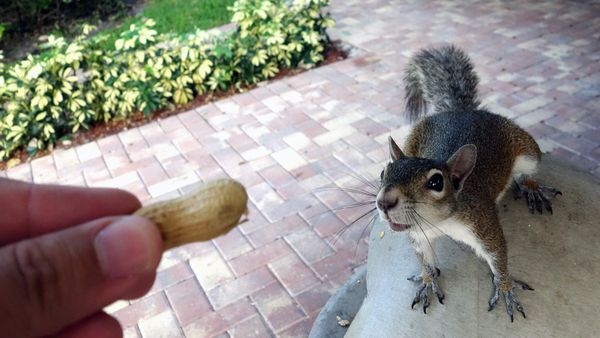
The town of Brevard, North Carolina, has a small liberal arts college and a Halloween parade befitting the county seat of Transylvania County. It also has a thriving population of white squirrels.
About a third of the population of eastern grey squirrels (Sciurus carolinensis) in Brevard are leucistic, meaning they have white fur and dark eyes. Eastern gray squirrels are usually gray, but in some spots in Brevard, about half the squirrels are white or pale with darker patches.
Advertisement
The difference between leucism and albinism is that while animals with albinism are lacking the melanin, the chemical responsible for making pigment in skin, hair, feathers and eyes. Leucistic animals have a partial, but not total, loss of pigment, which means they have normal colored eyes, and sometimes patches of darker fur or feathers. Leucism is an inherited trait, so parents can pass it along to their children.
Where the leucistic squirrels of Brevard came from is a bit of a mystery, but the official story is they escaped a carnival truck that traveled to Brevard from Florida in 1949. The squirrels were caught by a Mr. Black and subsequently traded to a Mr. Mull, who gave them to his niece Barbara, who tried to breed them. When Barbara's attempts at animal husbandry failed, one white squirrel escaped and the other was let loose. And where Barbara failed, the natural order of things succeeded, and now Brevard — especially the campus of Brevard College — has a robust leucistic squirrel population.
Brevard became so proud of its white squirrel population that in 1986, the city council passed an ordinance establishing a sanctuary for all squirrels, but especially the white ones, making it illegal to "hunt, kill, trap, or otherwise take any protected squirrels within the city." Brevard even celebrates its leucistic squirrel population with an annual White Squirrel Festival.
Advertisement


